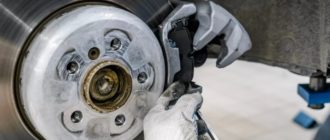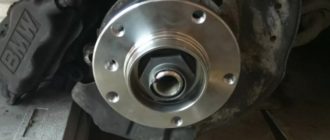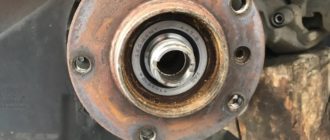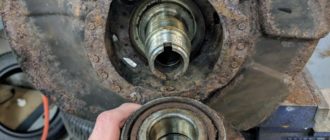BMW cars require periodic clutch replacement, with the timing determined by operating conditions and driving quality.
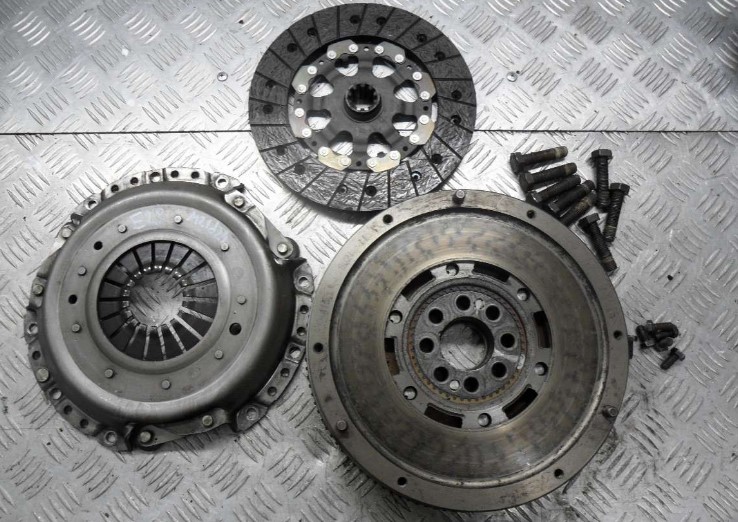
Clutch Replacement for BMW E60
Determining which specific part needs replacement — the disc, basket, or release bearing — is only possible after removing the basket. This work typically takes between 3 to 8 hours. On the BMW 60 model, clutch replacement requires gearbox removal. In some versions, the subframe may also need to be removed.
The decision to replace the clutch is made after diagnostics are performed at an auto service. Some signs may resemble gearbox or gear shifting mechanism malfunctions. For robotized gearboxes, adjusting the engagement point is necessary after the work is completed, which can only be done at a service station.
If any abnormal clutch behavior is detected, diagnostic testing should be carried out. Failure to address issues promptly may result in the need to replace the flywheel, which costs twice as much as a clutch kit.
Key signs of malfunction include:
- Increased noise when engaging and disengaging the clutch;
- Incomplete engagement with slipping;
- Incomplete disengagement («dragging»);
- Stiff or spongy clutch pedal;
- Crunching or jerking when shifting gears;
- A smell of burning when starting abruptly;
- Slipping or loss of power when driving uphill.
Clutch Replacement on BMW E46
For BMW cars in the 3 series, a special self-adjusting clutch is used, requiring special tools for disassembly and installation. Additionally, a specific centering tool is needed for fitting the driven disc.
The disassembly sequence involves:
- Removing the gearbox;
- Securing the flywheel to the ring using a screwdriver, rod, or special BMW tool. The tool must be placed only in designated points to prevent clutch damage;
- Inserting a pre-compression tool, tightening the fixing screw, and checking its position;
- Tightening the compression screw until the springs are fully compressed. Clutch bolts should be loosened by 1 to 1.5 turns to release the pressure plate;
- Completely unscrewing all bolts;
- Removing the clutch basket and driven disc;
- Cleaning the flywheel.
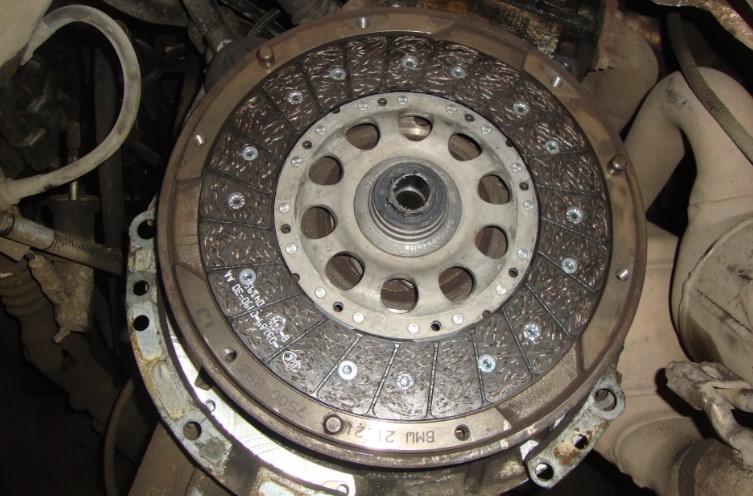
Further steps include:
- Checking the flywheel surface for grooves, replacing if necessary. Special bolts should be replaced after each disassembly;
- Checking the ease of rotation of the guide bearing. If difficult, it should be removed with a puller and a new bearing pressed using a hammer and brass rod;
- Inspecting the pressure plate surface for cracks, overheating, or wear. The internal deflection of the pressure plate should not exceed 0.3 mm;
- Cleaning the pressure plate and flywheel using fine sandpaper;
- Measuring the thickness of the friction disc pads;
- Inspecting the clutch springs for damage;
- Replacing a lubricated or damaged disc.
Bleeding the clutch on BMW E34
The fluid in the hydraulic system is toxic and can dissolve paint. Avoid contact with skin or eyes.
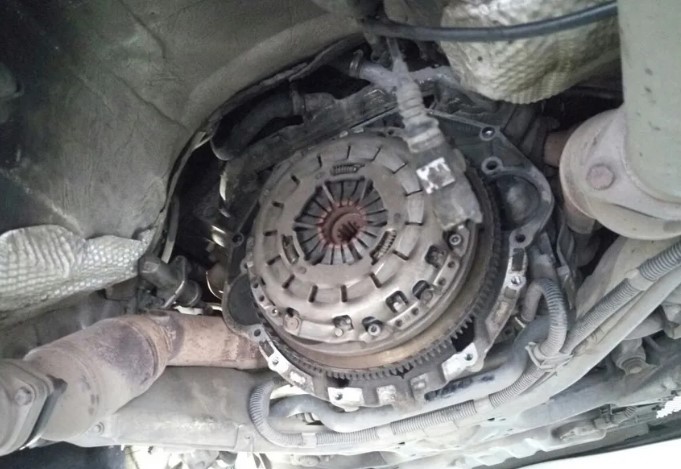
Air entering the hydraulic system can hinder brake pedal operation. This can occur when any part is removed or if the fluid level drops below the required level. To address this issue, follow these steps:
- Check the fluid level in the reservoir. If necessary, top up the fluid to reach the Full or MAX level. Use only the recommended type of fluid and avoid mixing;
- Engage the parking brake. Raise the front of the car with a jack and securely place it on axle stands;
- Remove the cap from the bleeding valve on the slave cylinder;
- Attach a plastic tubing to the nipple. Fill the container with clean fluid to about 1/3, ensuring the end of the tubing is submerged;
- Slightly loosen the valve, then tighten it just enough for easy removal;
- Have an assistant pump the clutch pedal several times and hold it down;
- With the pedal held down, open the valve about half a turn. Once fluid stops flowing, tighten the valve;
- Repeat the process until no more air bubbles come out through the tubing;
- Fully tighten the bleeding valve once finished, remove the tubing, and replace the cap;
- Check the fluid level in the reservoir and take a test drive to ensure clutch effectiveness.
During the test drive, verify the clutch's performance.

